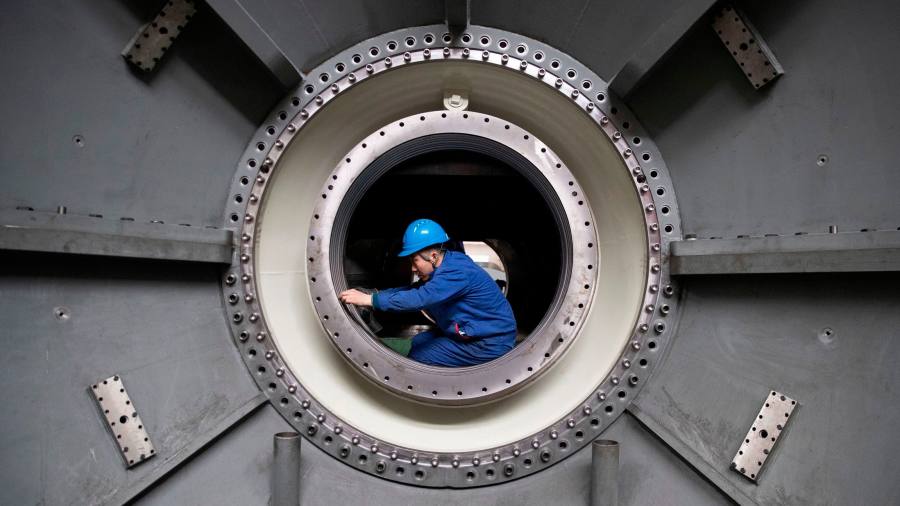China’s manufacturing activity contracted in April, official figures showed, as global demand for goods slowed and Communist party leaders warned that a post-Covid recovery in the world’s second-largest economy had yet to gain solid footing.
The National Bureau of Statistics’ purchasing managers’ index fell to 49.2 points compared with 51.9 in March, falling below analyst expectations of 51.4 in a Reuters poll.
China’s non-manufacturing purchasing managers’ index, which includes the services and construction sectors, was 56.4, down from 58.4 in March but still showing expansion since President Xi Jinping ended the country’s economy-constraining zero-Covid policy in December.
A reading above 50 indicates expansion compared with the previous month, while one below 50 means a contraction.
“This is a mixed PMI report and suggests that China’s post-Covid recovery has somewhat lost steam and calls for continued policy support,” said Zhou Hao, chief economist at Guotai Junan International, a Hong Kong-based brokerage.
In a sign of China’s economic recovery from last year, state media reported forecasts that about 240mn passenger trips would be made during this week’s five-day May Day holiday, higher than in 2019 before the pandemic.
But while consumer activity is rebounding from a low base, the rest of the economy has deeper challenges, with the property sector still limping after a government crackdown and export markets fading as advanced economies weaken.
In March, China’s PMI showed a similar picture, with growth in manufacturing dipping despite a recovery in exports, while other sectors showed a rapid rise in activity, indicating an uneven recovery.
“Economic growth has exceeded expectations . . . and China’s economy is off to a good start,” the Communist party’s politburo said in a meeting on Friday. But the “endogenous driving force” of the economy was “still weak and demand insufficient”, state media Xinhua reported the bureau as saying.
Zhao Qinghe, senior statistician at the NBS, said in a statement on Sunday that the manufacturing PMI’s contraction was “due to factors such as insufficient market demand and the high base formed by the rapid recovery of the manufacturing industry in the first quarter”.
Production expanded slightly, but sub-indices for new orders, raw material inventories and employment in the manufacturing sector all fell.
Goldman Sachs said in a note that the non-manufacturing index’s performance was “still solid but lower than market expectations, suggesting continued recovery in construction and services sectors but at a slower sequential pace”.
Part of the recovery in construction was driven by infrastructure, the NBS said. Beijing has used infrastructure to stimulate growth following the property sector’s collapse over the past two years.
The politburo signalled more support for economic recovery and called for targeted “proactive fiscal policy” and “prudent monetary policy”.
“The incomes of urban and rural residents should be increased through multiple channels . . . and the consumption of services in sectors such as culture and tourism should be boosted,” Xinhua reported the politburo as saying.
Nomura forecast that China’s export industries would remain under pressure due to “the ongoing global tech downturn, heightened global financial market turmoil and deteriorating US-China trade relations”.
“The export downturn will likely continue to hinder the recovery of employment and manufacturing investment,” it said in a report prior to the PMI data release.
Read the full article here




